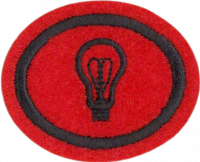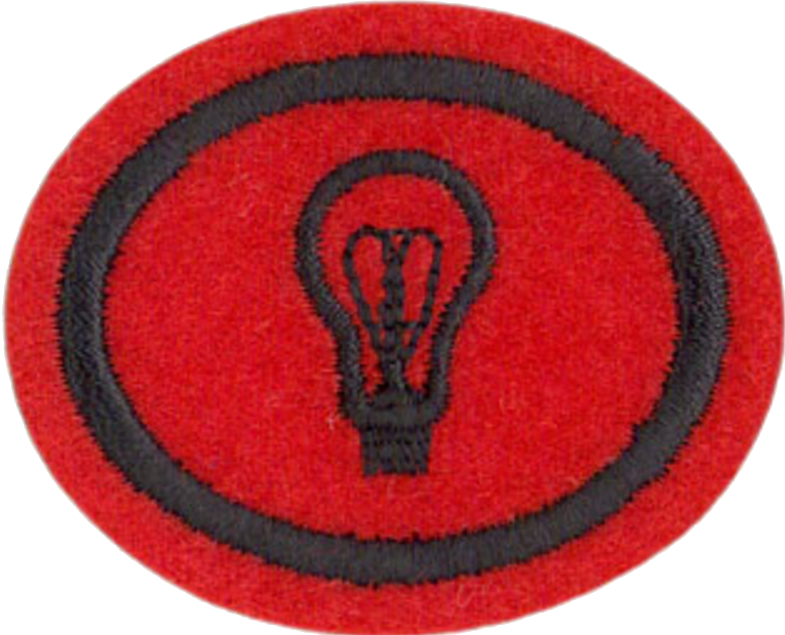Difference between revisions of "AY Honors/Electricity/Requirements"
Jomegat bot (talk | contribs) m (Add RequirementsHeader) |
m (- Category of Honor Requirements) |
||
| (8 intermediate revisions by 2 users not shown) | |||
| Line 1: | Line 1: | ||
| − | + | {{HonorSubpage}} | |
| − | + | ||
| + | <section begin=Body /> | ||
| + | |||
| + | <b>1. <section begin=req1 /><noinclude><translate><!--T:1--> | ||
| + | </noinclude>Explain and illustrate an experiment by which the laws of electrical attraction and repulsion are shown. | ||
| + | <noinclude></translate></noinclude><section end=req1 /></b> | ||
| + | |||
| + | <b>2. <section begin=req2 /><noinclude><translate><!--T:2--> | ||
| + | </noinclude>Explain the difference between direct and alternating current, and demonstrate the uses to which each is adapted. Give a method of determining which kind flows in a given circuit. | ||
| + | <noinclude></translate></noinclude><section end=req2 /></b> | ||
| + | |||
| + | <b>3. <section begin=req3 /><noinclude><translate><!--T:3--> | ||
| + | </noinclude>Connect a buzzer, bell, or light with a battery using a switch in line. | ||
| + | <noinclude></translate></noinclude><section end=req3 /></b> | ||
| + | |||
| + | <section begin=challenge /> | ||
| + | <b>4. <section begin=req4 /><noinclude><translate><!--T:4--> | ||
| + | </noinclude>Make and run a simple electric motor from a kit or take apart a motor and identify the parts, and explain how it works. | ||
| + | <noinclude></translate></noinclude><section end=req4 /></b> | ||
| + | <section end=challenge /> | ||
| + | |||
| + | <b>5. <section begin=req5 /><noinclude><translate><!--T:5--> | ||
| + | </noinclude>Make a simple battery cell. | ||
| + | <noinclude></translate></noinclude><section end=req5 /></b> | ||
| + | |||
| + | <b>6. <section begin=req6 /><noinclude><translate><!--T:6--> | ||
| + | </noinclude>Demonstrate the ability to replace fuses or reset breakers and demonstrate a National Electric Code (NEC) approved splice using insulated wires. | ||
| + | <noinclude></translate></noinclude><section end=req6 /></b> | ||
| + | |||
| + | <b>7. <section begin=req7 /><noinclude><translate><!--T:7--> | ||
| + | </noinclude>Show how you would rescue a person in contact with a live electric wire, and have a knowledge of the method of reviving a person insensible from shock. | ||
| + | <noinclude></translate></noinclude><section end=req7 /></b> | ||
| + | |||
| + | <b>8. <section begin=req8 /><noinclude><translate><!--T:8--> | ||
| + | </noinclude>Make a simple diagram of a lighting system of an automobile. | ||
| + | <noinclude></translate></noinclude><section end=req8 /></b> | ||
| + | |||
| + | <b>9. <section begin=req9 /><noinclude><translate><!--T:9--> | ||
| + | </noinclude>Make a diagram that properly shows the lights, switches, and convenience outlets controlled by each breaker in a house. | ||
| + | <noinclude></translate></noinclude><section end=req9 /></b> | ||
| + | |||
| + | <b>10. <section begin=req10 /><noinclude><translate><!--T:10--> | ||
| + | </noinclude>Read an electric meter correctly, and compute a residence bill at the rate charged in your community. | ||
| + | <noinclude></translate></noinclude><section end=req10 /></b> | ||
| + | <section end=Body /> | ||
Latest revision as of 22:03, 20 July 2022
1. Explain and illustrate an experiment by which the laws of electrical attraction and repulsion are shown.
2. Explain the difference between direct and alternating current, and demonstrate the uses to which each is adapted. Give a method of determining which kind flows in a given circuit.
3. Connect a buzzer, bell, or light with a battery using a switch in line.
4. Make and run a simple electric motor from a kit or take apart a motor and identify the parts, and explain how it works.
5. Make a simple battery cell.
6. Demonstrate the ability to replace fuses or reset breakers and demonstrate a National Electric Code (NEC) approved splice using insulated wires.
7. Show how you would rescue a person in contact with a live electric wire, and have a knowledge of the method of reviving a person insensible from shock.
8. Make a simple diagram of a lighting system of an automobile.
9. Make a diagram that properly shows the lights, switches, and convenience outlets controlled by each breaker in a house.
10. Read an electric meter correctly, and compute a residence bill at the rate charged in your community.


